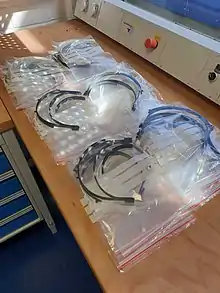Rapid Prototyping
When making prototypes, having quick tangible feedback is of great importance for spotting facets of a work which are not immediately clear on paper or in computer models.
One off production
When producing just one or a few items, the inherent inefficiencies of 3D printing matter much less, especially if the properties of 3D printed materials are adequate or if the time to begin production is limited (Taking just a few hours or days assuming the model is ready).
Accessibility
3D printing can be used to create tactile versions of visual media like artwork or maps for the blind.[1][2]
Logistic stopgap

When supply chains are disrupted in an emergency, local 3D printer owners are able to produce low quantities of vital materials and parts, ensuring a constant, if very small stream of new supplies, while logistical challenges are fixed. This very scenario was seen in the early days of the COVID-19 pandemic, when 3D printer operators made PPE and ventilator parts for hospital staff.[3][4] It is also a strategy employed by some disaster preparedness strategies.[5]
References
- ↑ "Please Touch the Art: 3D Printed Masterworks for the Blind" (in en). https://www.vice.com/en/article/4xqbnw/please-touch-the-art-3d-printed-masterworks-for-the-blind.
- ↑ Karbowski, Caroline (24 February 2020). "See3D: 3D Printing for People Who Are Blind". doi:10.14448/jsesd.12.0006. https://scholarworks.rit.edu/jsesd/vol23/iss1/6/.
- ↑ "One Way to Help Strapped Hospitals? Print PPE Using 3D Printers" (in en). https://www.npr.org/2020/03/28/822911643/one-way-to-help-strapped-hospitals-print-ppe-using-3d-printers. Retrieved 7 November 2020.
- ↑ Fracassi, Cristian; Romaioli, Alessandro (22 March 2020). "Opinion We Made Copies of Ventilator Parts to Help Hospitals Fight Coronavirus". https://www.nytimes.com/2020/03/22/opinion/ventilators-coronavirus-italy.html.
- ↑ "Doomsday Preppers Are Planning to 3D Print Their Way Through the Apocalypse" (in en). https://www.vice.com/en/article/9a3q75/doomsday-preppers-are-planning-to-3d-print-their-way-through-the-apocalypse.